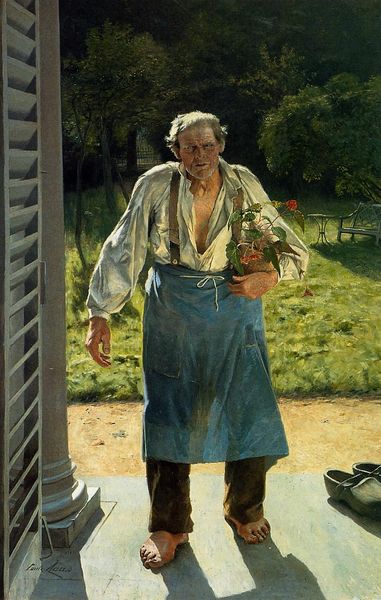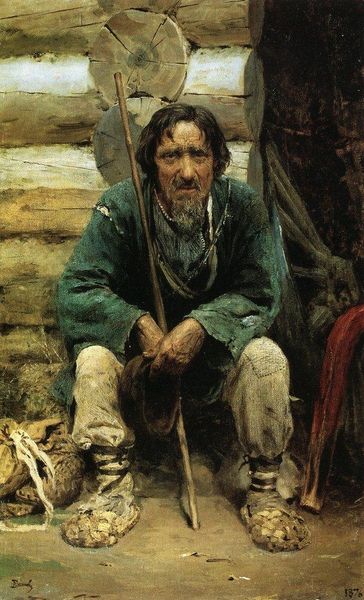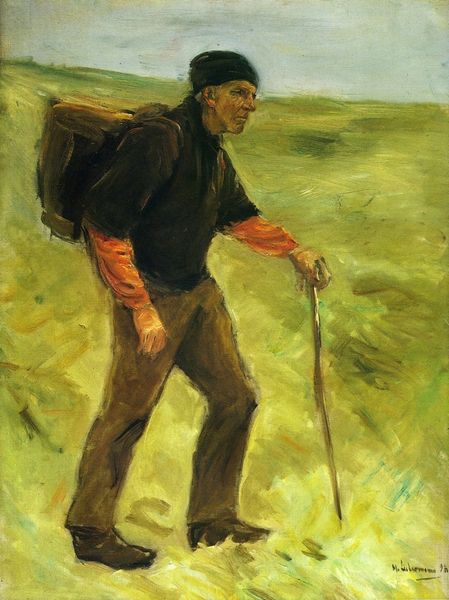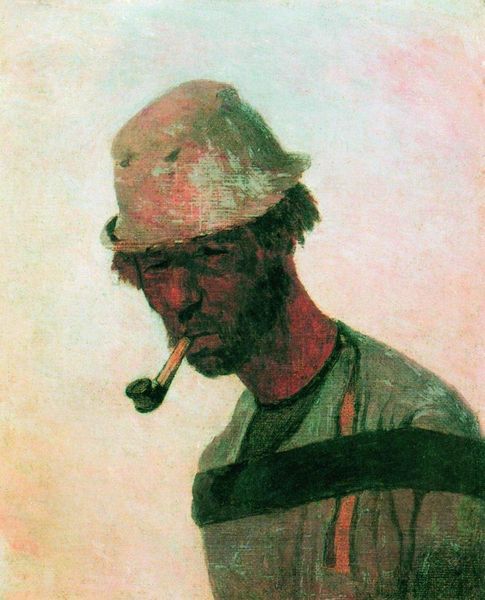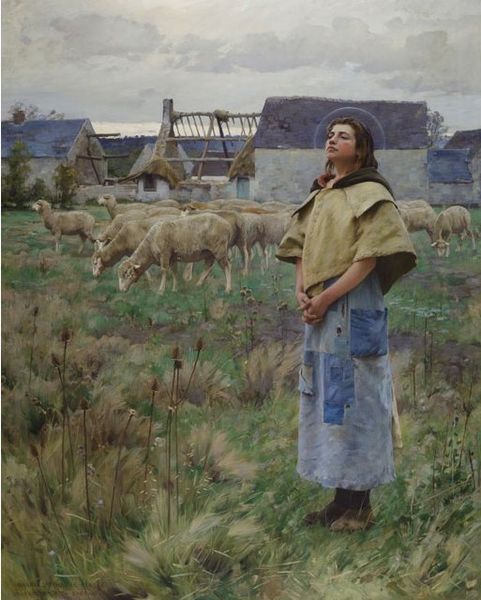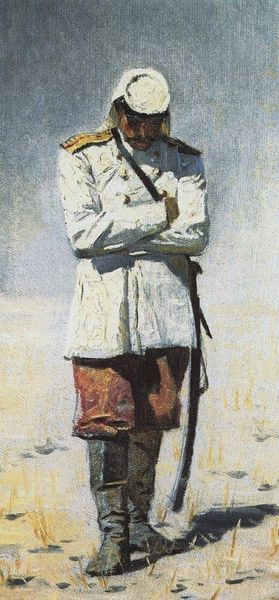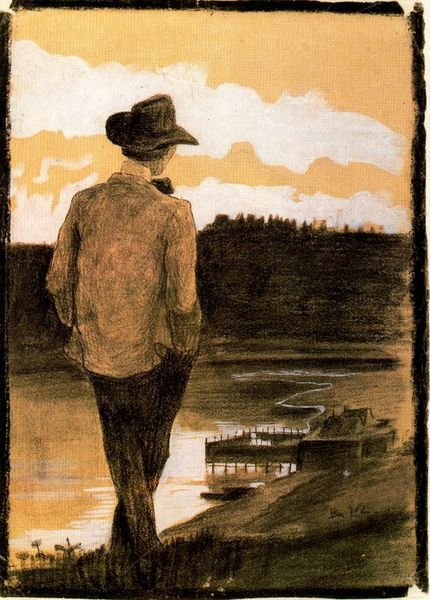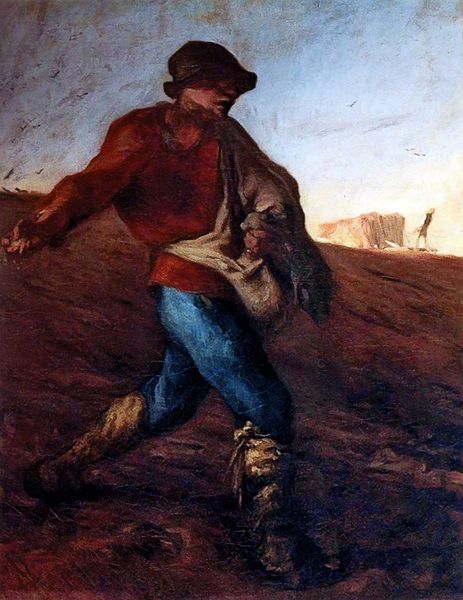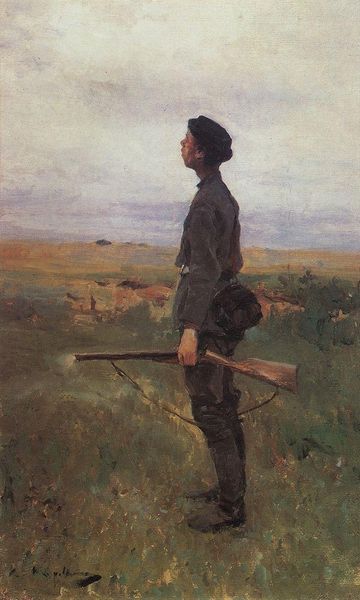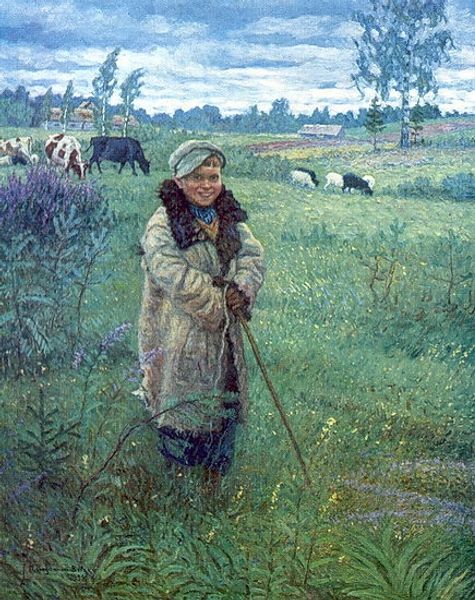
Copyright: Public domain
Editor: So, here we have Ilya Repin's "Burlak," painted in 1870 using oil on canvas. The subdued colors create such a somber mood. I’m immediately struck by how downtrodden he looks. What do you see in this piece? Curator: Beyond the obvious melancholic air, I see a powerful social commentary. Consider the historical context: Repin painted this shortly after serfdom was abolished in Russia. While legally free, many peasants found themselves trapped in new forms of economic hardship. How do you think Repin uses the man’s posture and clothing to speak about the limited possibilities available to him? Editor: His bowed head definitely conveys a lack of agency, a kind of resignation, and his clothes are practical, common. But his hands seem quite raw and rough, like he's been working a lot, very recently. Is Repin romanticizing the worker somehow, like so many artists in Europe and America were doing at this same time? Curator: It's crucial to avoid romanticizing the worker here, and Repin isn't really interested in celebrating labor as such. What's telling, and deeply political, is how Repin emphasizes the sheer exhaustion etched on the man’s face. He is literally bending under the weight of social injustice, bearing the unbearable strain of the vast changes following emancipation. Do you think a modern audience fully understands the degree to which social mobility remained restricted despite purported freedom? Editor: Probably not without some more context. Thanks for pointing out all the important intersections of history and class here. I thought it was simply a portrait of one downcast guy. Curator: Exactly! Art invites us to engage in the critical reflection and action needed to improve conditions of human life in all its complexity. That is what moves the political forward.
Comments
No comments
Be the first to comment and join the conversation on the ultimate creative platform.

